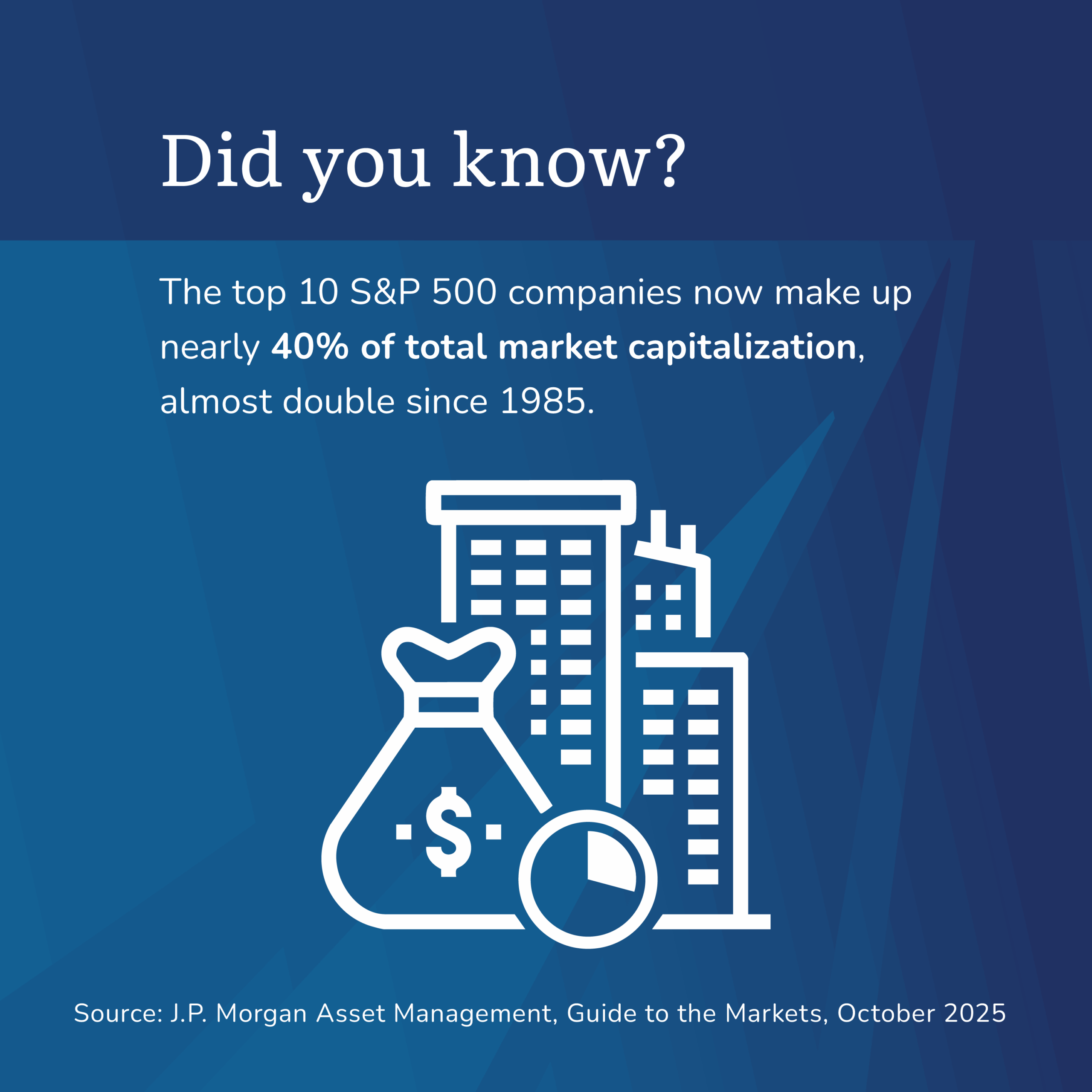My first big paycheck is finally in the bank – now what?
Recently I have been talking to clients’ kids or grandkids who have just graduated from college and are starting their first jobs as professionals. Some starting salaries can easily be in the low six figures depending on the profession, so a road map that covers how and where to start saving can be beneficial in the long run.
The two main issues at this point are usually budgeting and saving. Saving early has a huge impact on long term retirement planning, since you have many more years for compounding to work for you. The earlier you start, the better off you will be in the long term. The chart below shows that other than during the Great Depression, the U.S. stock market, despite pullbacks along the way, has gone in one direction.

Before you can start saving, you should create a budget. Make a list of the expenses you cannot avoid, such as rent, transportation expenses, food, clothes, student loan repayments, etc. Then create a second list of things you want or would like to have. Once you have those numbers, do a rough calculation to see how much you have left, to determine the amount you are able to save. Using an online program such as Mint.com can be very helpful in tracking expenses and creating a budget. If you find you are unable to save anything, you may want to revisit the second list and re-prioritize any non-essential expenses. Don’t forget to account for taxes!
When you are starting from scratch you should look at saving like layers on a cake.
- Create an emergency fund. Make sure you save enough money to cover a job loss or transition—about six months of living expenses makes sense. Hold these funds in a safe investment such as a liquid savings or money market account. You can go to Bankrate.com for a list of the highest yielding online savings accounts available in your area. Since there is no guarantee that your first employer will be your last, you may want to have a plan B.
- Once you have an emergency fund, you should start thinking about and saving for short to medium-term goals (goals that you hope to achieve in one to five years), such as buying a house. Usually, you will need about a 20 percent deposit, plus any other closing costs, such as transfer taxes, document stamps, and mortgage closing fees. Fees vary by state and purchase price, but budgeting around one to two percent of the value of the property is a close benchmark. Don’t forget about possible repairs and moving costs. It may be best to keep these funds in a shorter-term investment, such as a higher-yielding money market, CD, or short term bond fund, since you don’t want to find that your investment is down 10 percent when you need to close on the house.
- If your employer offers a 401K, you want to save enough to qualify for any employer match, since the match is effectively free money. For example, if you earn $100,000 and your employer matches 100 percent up to five percent of your salary, then you would want to contribute at least $5,000 per year. If you don’t contribute anything, you lose the $5,000 match. If your employer does not offer a 401K, you may be eligible to save up to $6,000 in a regular IRA depending on your income.
- Depending on your income, you may also be able to contribute to a Roth IRA. This is another type of tax-advantaged account that allows you to put away another $6,000 (for 2020). Contributions are made with after-tax dollars, so you will not get an upfront tax deduction as you would with a regular IRA contribution, but if you hold the Roth account for at least five years, any earnings on these funds can be withdrawn tax-free.
- If you have a high deductible health plan, you may qualify for a health savings account or HSA. You can contribute $3,550 as a single taxpayer for 2020 and get a tax deduction. When you have qualified health expenses, you can pay yourself back tax-free. This means you never paid taxes on these funds. Keep in mind that there are restrictions and penalties if these funds are not used for medical expenses, but the qualified expense list is very wide in scope and includes many day-to-day items you buy in a pharmacy. You are also able to save for health expenses and pay yourself back in the future.
- Lastly, if you have exhausted all the previous saving possibilities, any excess can be saved in regular individual or trust accounts as after-tax savings and invested for retirement.
It is very important to have a budget and savings plan and revisit it often to make sure you are on track with your goals. Saving early can allow you to achieve financial freedom much earlier, due to the magic of compounding over a longer time horizon. You can see from the chart below that if you start saving at age 20, you would need to save $306 per month to be a millionaire by age 65, compared to having to save over $6,000 per month if you waited until age 55 to start saving. Also, if you want to retire on $100,000, you need to have $2.5M saved at retirement. Although these charts don’t factor in all the possible variables, they give you a general idea of the impact of starting to plan at an early age.


Chart Sources:
https://www.marketwatch.com/story/want-to-retire-rich-heres-how-much-you-need-to-save-now-2018-02-05
https://money.com/heres-how-to-save-1-million-by-65-no-matter-how-old-you-are-now/
Categories
Recent Insights
-

Talk Your Chart | Artificial Intelligence, Global Markets, And What Really Drives Returns | Ep. 73
In Episode 73 of Talk Your Chart, Marcos and Brett begin by diving into the ongoing debate about Artificial Intelligence (AI) and its potential as a market bubble. They explore the real-world implications of AI for the economy, industries, and global markets. Drawing on historical market comparisons, such as Alan Greenspan’s 1996 warning about “irrational…
-

Heads or Tails: Navigating Pet Custody During Divorce
Divorce is rarely easy, and when pets are involved, it can become even more emotionally complex. For many couples, deciding who gets custody of a pet can be as heart-wrenching as dividing financial assets or determining child arrangements. Legally, pets are considered property in most states—but emotionally, they’re often family. That disconnect between law and…
-

A Smart Giving Strategy: How Charitable Remainder Annuity Trusts Turn Generosity into Legacy
Because Giving Shouldn’t Mean Giving Something Up Imagine this: You’ve worked hard, invested wisely, and now you’re thinking about how to share that success—not just with your loved ones, but with the causes and communities that shaped your journey. The question is no longer if you should give. It’s how to give meaningfully—without compromising your…
-

Workflow Automation for RIA Firms: Boost Efficiency, Compliance, and Client Experience
Managing client relationships, compliance, reporting, and portfolio updates can be a complex juggling act for Registered Investment Advisor (RIA) firms. Workflow automation is transforming how firms operate—streamlining processes, reducing errors, and enhancing the client experience. For additional insights into operational technology, read about How Microsoft Teams Can Transform Your RIA Firm’s Efficiency and Compliance. What…
-

Wine vs. Wall Street: How Does Fine Wine Compare to Stocks and Bonds?
CFP Taylor Gang explains why fine wine’s low market correlation, stability, and scarcity make it a unique alternative to stocks and bonds.
